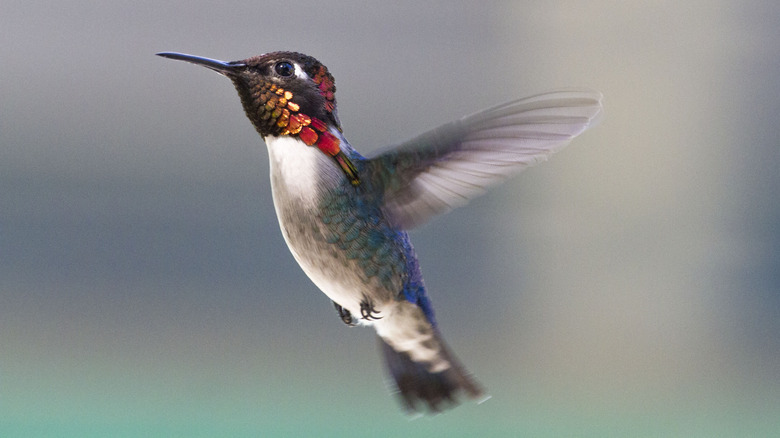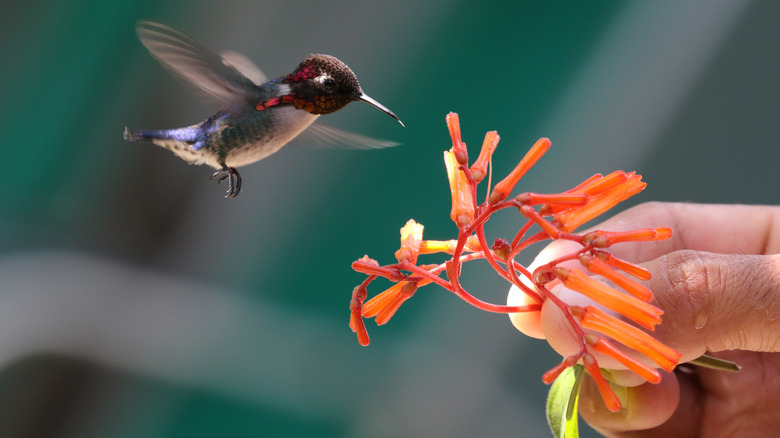This Is The Smallest Hummingbird In The World
The smallest hummingbird in the world is as long as a toothpick and weighs less than a cube of sugar. At just over two inches long and weighing a mere two grams, the bee hummingbird (Mellisuga helenae) isn't just the smallest species in its family; it's the smallest extant bird in the entire Animal Kingdom. When you consider the fact that nearly half of this bird's body length comes from its beak and tail, its diminutive nature becomes even more stark and extreme. It's no wonder how the bee hummingbird got its name: These buzzy birds are so small they might almost be mistaken for a bumblebee.
How does the bee hummingbird compare to other birds? It probably won't surprise you to learn that the list of smallest birds is dominated by hummingbirds, including the top three smallest birds of all. Number two on the list is the Esmereldas woodstar, which is about a quarter to half of an inch longer than the bee hummingbird. From there, it's another quarter inch up to the calliope hummingbird, which is the smallest bird in North America, wintering in Mexico but flying as far north as Ohio. Still, it's solidly above the tiny bee hummingbird. It's difficult to believe that these miniatures belong to the same taxonomic class as ostriches, although the two species actually have a lot in common. When nature works in extremes, one can't help but marvel.
The life of a bee hummingbird
Bee hummingbirds are only found on the island of Cuba. The climate there is perfect for hummingbirds in general, which typically favor tropical environments where there are abundant flowers providing nectar for them to feed on. The bee hummingbird is one of only two hummingbird species native to Cuba. Its companion on the island is the Cuban emerald hummingbird, which is over twice as large as the bee hummingbird. This stark size difference actually works in favor of the bee hummingbird though, as it can feed on smaller flowers than the emerald hummingbird, avoiding competition.
Despite being barely larger than a paperclip, bee hummingbirds need to eat a lot. That's because small bodies lose heat very quickly, requiring higher metabolic rates, and thus more food for fuel. Bee hummingbirds also require a lot of energy for flight; they beat their wings around 80 times a second, and can escalate to as much as 200 beats per second during courtship rituals. These rapid wings can propel the tiny bird up to 30 miles per hour.
The hummingbird life cycle also kicks off fast. After the offspring emerge from their pea-sized eggs, they proceed to reach maturity at just between a month and two months of age. Despite ranking at the bottom of the size charts, bee hummingbirds actually have a long lifespan by hummingbird standards. While most species live just 3–5 years, bee hummingbirds can live twice as long, around 7–10 years. Not a bad tradeoff for those little bodies.

